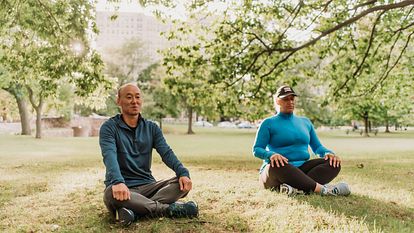So how can you learn to be more mindful about listening to your body to enhance recovery?
The most important part of the process is knowing when your body needs rest. To do this, I recommend trying a head-to-toe body scan a few minutes into most runs, whether that’s an easy jog or the warm-up before a workout. This can help you get a handle on things like how tired your legs feel, if your breathing seems more labored than usual or if your posture or gait are sub-par. By paying attention to how you feel physically, part by part, you tune out extraneous worries and distractions and allow yourself to be anchored to the present moment via your body—and you could help prevent common running injuries.
I suggest doing this scan five to 10 minutes into a run. The scan itself takes most runners three to five minutes. Don’t worry if you get distracted in the midst of your scan. Mindfulness simply calls you to notice that your thoughts have wandered away from the present moment and redirect back to it.







Join our Newsletter
Get deals, events, and more.
Connect with Fleet Feet
Get involved on social media.
Find a Location
Fleet Feet has over 250 locations nationwide!
Find a Store